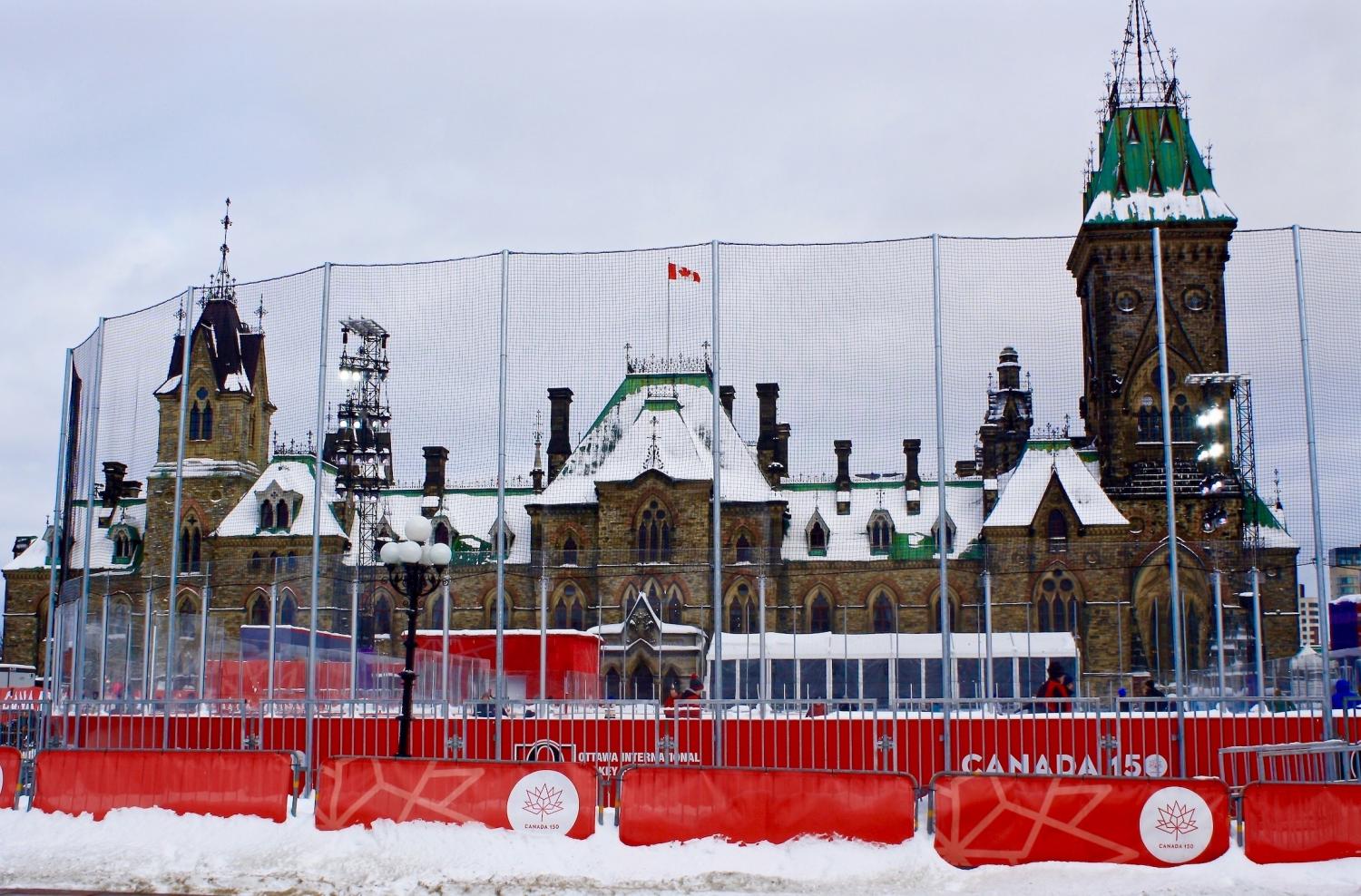
Did Ottawa Really Need Another Skating Rink?
Photo by Emily Kathen
2017 in Ottawa was a year full of excitement. From the Red Bull Crashed Ice championship, to the fire-breathing La Machine, to the 150th Grey Cup Festival, Ottawa was the place to be to celebrate Canada’s 150th anniversary of confederation, and unsurprisingly held the number one spot in Expedia’s 2017 list of Canadian cities to visit.
There is one Canada 150 attraction, however, that still remains in 2018 despite limited celebration and considerable protest: the Canada 150 skating rink.
Eyebrows were inevitably raised following the government’s announcement that an NHL-sized skating rink would take over the lawn of Parliament Hill, as a year-end bash to conclude the Canada 150 celebrations back in November. After all, Ottawa is home to the largest skating rink in the world, and the perfectly maintained Rink of Dreams is a mere ten-minute walk away at City Hall. But raised eyebrows quickly turned to outrage when it was revealed that the allotted budget for the rink was a whopping $5.6 million, and that it would stay open for only three weeks in December.
After MPs voiced their concerns for the rink’s hefty price tag and short duration, Canadian Heritage Minister Melanie Joly quickly amended the plan, announcing on Twitter—only one day after the initial unveiling—that the rink would remain open until the end of February. This would let “even more families […] lace up their skates for this once in a lifetime opportunity,” Minister Joly claimed, though it was not said how much more it will cost to maintain the rink for these extra two months.
The $5.6 million price tag of the Canada 150 rink isn’t the only thing that has been publicly criticized since its grand opening on December 7. Deemed by many as the “rink of rules”, the ice rink comes with many restrictions. All skaters must have passes to enter onto the ice, and though passes are free, they must be reserved online at least two days in advance. Skaters can only be on the ice for 45 minutes at a time. Food and drinks are prohibited on the ice. Parents cannot carry their children while skating. Playing tag and racing are not tolerated. Speed skating, figure skating, and playing hockey are not permitted. And, up until recently, even cell phones were not allowed on the ice. (Yes, that meant no videos, selfies, or group photos.)
The only apparent saving grace of the Canada 150 rink was that it brought together 32 peewee boys and girls hockey teams from across the country to compete in the 19th annual Bell Capital Cup hockey tournament in December; though in the end, players had limited time on the rink due to extremely low temperatures that hit Ottawa and ultimately rendered the ice unusable. “Basically, it is too cold, so the ice condition is not good right now,” explained Simon Ross, spokesperson for Minister Joly, in an interview for The Toronto Star. “The exact word is ‘high degree of ice chipping',” he said.
So, is this final Canada 150 celebration really worth the $5.6 million bill? Sure, tourists and Canadians alike are able to embrace their inner Canuck and celebrate our great country while skating circles on Parliament Hill; but for a temporary rink that will be torn down within a matter of weeks, it’s questionable whether the substantial cost is at all justifiable.
Back in 2012, the Rink of Dreams at Ottawa City Hall experienced backlash when the $2.4 million budget was announced; but compared to the cost of the Canada 150 rink, $2 million for an entire season of skating seems like a great deal. Even the cost to maintain the entire Rideau Canal for a winter season is about $1.5 million, a mere fraction of the cost of the Parliament Hill rink.
Perhaps Ottawa should have taken notes from cities like Smithers, B.C., where an entire hockey arena—complete with seating for 350 people—was built for $4.7 million. Or Sun Peaks, B.C., where the municipality built a permanent, NHL-sized open-air ice rink that cost a total of $850,000. Or the small city of Kingman, Alberta, where residents came together to build a new hockey rink for just over $63,000.
Better yet, perhaps the $5.6 million should have been used to build sustainable foundations for outdoor rinks across the country in communities that need them most. When all that’s needed for an outdoor ice rink are wooden boards, water and cold temperatures, surely $5.6 million would have gone a very long way.








